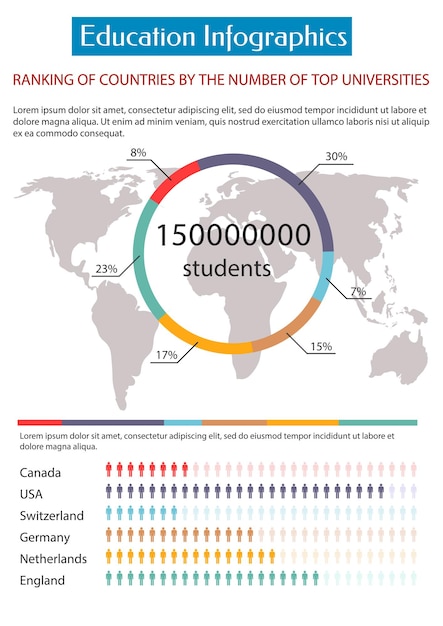Projected Teacher Shortages in the US: The Next 5 Years

Projected teacher shortages in the US over the next five years highlight a growing concern, impacting educational quality and student outcomes due to factors such as teacher burnout, inadequate compensation, and increasing student enrollment.
The American education system faces a looming crisis: what are the projected teacher shortages in the US for the next 5 years? Understanding the scope and causes of this shortage is crucial for policymakers, educators, and communities to develop effective solutions and ensure that students have access to quality education.
Understanding the Scope of Teacher Shortages
Teacher shortages are not a new phenomenon, but projections indicate a potentially worsening situation in the coming years. These shortages vary by region, subject area, and grade level, creating challenges for schools and districts across the nation. Understanding the scope of these shortages is the first step toward addressing the problem effectively.
Geographic Disparities in Teacher Supply
Teacher shortages are not uniformly distributed across the US. Some states and regions are experiencing more severe shortages than others. Factors such as cost of living, working conditions, and state education policies contribute to these disparities. Areas with lower pay, fewer resources, and less support for teachers often struggle to attract and retain qualified educators.
Subject-Specific Shortages
Certain subject areas are consistently facing teacher shortages. STEM fields (science, technology, engineering, and mathematics), special education, and bilingual education are among the most critical areas. These shortages can impact the quality of instruction and limit students’ access to essential subjects. Targeted recruitment and retention strategies are needed to address these specific needs.
Here are some key areas where teacher shortages are more acute:
- STEM Fields: The demand for STEM professionals is high, leading many qualified individuals to pursue careers outside of education.
- Special Education: The complexities of teaching students with special needs require specialized training and support, making it difficult to find and retain qualified special education teachers.
- Bilingual Education: As the US population becomes more diverse, the need for bilingual educators is growing, but the supply of qualified teachers is not keeping pace.
- Rural Areas: Rural schools often struggle to attract and retain teachers due to isolation, limited resources, and lower pay.
In conclusion, the scope of teacher shortages is multifaceted, with geographic and subject-specific disparities creating unique challenges for schools and districts. Addressing these shortages requires a comprehensive approach that considers the diverse needs of different regions and subject areas.

Factors Contributing to the Teacher Shortage
Several factors contribute to the looming teacher shortage in the US. These include teacher burnout, inadequate compensation, lack of support, and increasing student enrollment. Understanding these drivers is essential for developing effective strategies to mitigate the shortage and improve teacher retention.
Teacher Burnout and Stress
The teaching profession can be incredibly demanding, leading to high levels of stress and burnout among educators. Factors such as large class sizes, administrative burdens, and lack of resources contribute to this problem. When teachers are overwhelmed and unsupported, they are more likely to leave the profession.
Inadequate Compensation and Benefits
Teacher salaries have not kept pace with inflation, making it difficult to attract and retain qualified educators. Many teachers also face significant student loan debt, further exacerbating financial pressures. Improving teacher compensation and benefits is crucial for making the profession more attractive and sustainable.
Consider these elements contributing to teacher compensation issues:
- Stagnant Wages: Teacher salaries have remained relatively stagnant compared to other professions requiring similar levels of education and experience.
- Lack of Advancement Opportunities: Many teachers feel that there are limited opportunities for career advancement and increased pay within the education system.
- High Cost of Living: In some areas, the cost of living is so high that teachers struggle to make ends meet, even with a full-time salary.
- Benefit Packages: While some districts offer comprehensive benefit packages, others provide minimal coverage, adding to the financial strain on teachers.
Lack of Support and Resources
Teachers need adequate support and resources to be successful. This includes access to professional development, mentoring programs, and instructional materials. When teachers feel unsupported and lack the tools they need to do their jobs effectively, they are more likely to become disillusioned and leave the profession. Creating a supportive and collaborative environment is essential for teacher retention. Furthermore, the lack of parental support and community involvement frequently add to teachers’ stress.

The Impact of Teacher Shortages on Students
Teacher shortages have a direct impact on students’ learning experiences and academic outcomes. When schools struggle to find qualified teachers, class sizes often increase, and students may be taught by instructors who are not fully prepared. This can lead to lower test scores, reduced engagement, and decreased opportunities for individual attention.
Larger Class Sizes and Overcrowding
When schools are short-staffed, they may be forced to increase class sizes to accommodate all students. Larger class sizes make it more difficult for teachers to provide individualized attention and support, which can negatively impact student learning. Overcrowding can also create a chaotic and disruptive learning environment.
Compromised Quality of Instruction
In some cases, schools may have to hire teachers who are not fully qualified or experienced to fill vacancies. This can compromise the quality of instruction and limit students’ access to effective teaching strategies. Students may also miss out on essential subjects if schools are unable to find teachers in specialized areas.
Let’s consider the following points about instruction quality:
- Reduced Individual Attention: With larger class sizes, teachers have less time to spend with each student individually, making it harder to address their unique learning needs.
- Limited Instructional Resources: Shortages can lead to fewer resources for teachers, such as instructional materials and technology, which can hinder their ability to deliver engaging and effective lessons.
- Increased Teacher Turnover: High teacher turnover rates can disrupt the continuity of instruction and make it difficult for students to build relationships with their teachers.
Long-Term Effects on Academic Achievement
Teacher shortages can have long-term effects on students’ academic achievement and future opportunities. Students who attend schools with chronic teacher shortages may be less likely to graduate from high school and pursue higher education. Addressing teacher shortages is essential for ensuring that all students have access to a quality education and the opportunity to succeed.
Strategies for Addressing the Shortage
Addressing teacher shortages requires a multi-faceted approach that includes improving teacher recruitment, retention, and support. Policymakers, educators, and communities must work together to create a more attractive and sustainable teaching profession.
Improving Teacher Compensation and Benefits
Increasing teacher salaries and providing comprehensive benefits packages can make the profession more attractive to potential educators. This can also help retain experienced teachers who may be considering leaving the profession for better-paying jobs.
Creating Supportive Working Environments
Providing teachers with adequate support and resources is essential for reducing burnout and improving retention. This includes access to professional development, mentoring programs, and instructional materials. Schools and districts should also focus on creating a collaborative and supportive work environment where teachers feel valued and respected.
Here are ideas for creating supportive environments:
- Mentorship Programs: Pairing new teachers with experienced mentors can provide valuable guidance and support during their first few years in the profession.
- Professional Development Opportunities: Providing teachers with ongoing opportunities to learn and grow can help them stay engaged and effective.
- Collaborative Planning Time: Giving teachers time to collaborate with their colleagues can foster a sense of community and allow them to share best practices.
In conclusion, mitigating teacher shortages requires a collaborative effort to improve the appeal and sustainability of the teaching profession. By addressing compensation, support, and preparation, the US can pave the way for a stronger and more dedicated educator workforce, ultimately benefiting students and communities nationwide.
The Role of Teacher Preparation Programs
Teacher preparation programs play a crucial role in ensuring that new teachers are well-prepared for the challenges of the classroom. These programs should provide aspiring teachers with the knowledge, skills, and experiences they need to be effective educators. Strengthening teacher preparation programs is essential for addressing teacher shortages and improving the quality of instruction.
Recruiting Diverse Candidates into Teacher Education
Efforts to increase the diversity of the teaching profession are essential for better reflecting the student population. Recruiting candidates from underrepresented backgrounds can help to address teacher shortages and provide students with role models who understand their cultural experiences.
Enhancing Practical Experience and Mentorship
Providing aspiring teachers with ample opportunities for practical experience and mentorship can help them develop the skills and confidence they need to succeed in the classroom. Student teaching placements, internships, and mentoring programs can provide valuable hands-on learning experiences and support.
Consider the following approaches:
- Residency Programs: Longer-term residency programs that allow aspiring teachers to work alongside experienced educators can provide a more immersive and comprehensive training experience.
- Simulations and Virtual Reality: Incorporating simulations and virtual reality into teacher preparation programs can help aspiring teachers practice their skills in a safe and controlled environment.
- Community Partnerships: Collaborating with community organizations and local schools can provide aspiring teachers with opportunities to work with diverse student populations and learn about the unique challenges and opportunities in different communities.
In summary, bolstering teacher preparation programs through diverse recruitment, practical experience, and community partnerships is vital for developing a cohort of well-equipped and dedicated educators, better positioning schools to address projected teacher shortages.
Looking Ahead: The Future of the Teaching Profession
Addressing teacher shortages is an ongoing challenge that requires sustained effort and innovation. As the demographics of the US continue to evolve, and as technology plays an increasingly important role in education, the demands on teachers will continue to change. By embracing new approaches and prioritizing the needs of educators, we can create a more vibrant and sustainable teaching profession for the future.
Embracing Technology in the Classroom
Technology can be a powerful tool for enhancing instruction and engaging students. By incorporating technology into the classroom, teachers can create more interactive and personalized learning experiences. However, it is essential to provide teachers with the training and support they need to use technology effectively.
Promoting Collaboration and Innovation
Creating a culture of collaboration and innovation within schools and districts can help teachers stay engaged and motivated. Encouraging teachers to share best practices, experiment with new teaching strategies, and work together to solve problems can foster a sense of community and improve the quality of instruction.
- Micro-credentialing: Offering micro-credentials that recognize specific skills and competencies can provide teachers with opportunities to advance their careers and demonstrate their expertise.
- Teacher Leadership Opportunities: Creating opportunities for teachers to take on leadership roles within their schools and districts can empower them to shape education policy and practice.
- Flexible Work Arrangements: Offering flexible work arrangements, such as part-time positions or job-sharing opportunities, can help attract and retain teachers who may need more flexibility in their schedules.
In closing, the future of the teaching profession hinges on embracing innovation, promoting collaboration, and adapting to the evolving needs of students and educators. By fostering environments that support teachers’ growth and well-being, the US can build a resilient and dynamic education system ready to meet the challenges of tomorrow.
| Key Point | Brief Description |
|---|---|
| 🔥 Teacher Burnout | High stress levels lead to educators leaving the profession. |
| 💰 Inadequate Pay | Low salaries make it difficult to attract and retain teachers. |
| 📚 Limited Resources | Lack of support and materials affects teaching quality. |
| 🍎 Student Impact | Shortages lead to larger classes and compromised instruction. |
Frequently Asked Questions
▼
Teacher shortages are concerning due to factors like teacher burnout, inadequate compensation, and rising student enrollment, impacting educational quality.
▼
Subjects such as STEM (science, technology, engineering, mathematics), special education, and bilingual education face the most severe shortages.
▼
Shortages lead to larger class sizes, compromised instruction quality, and reduced individualized attention for students, affecting learning outcomes.
▼
Improving teacher compensation, providing supportive working environments, and enhancing teacher preparation programs are effective strategies.
▼
Technology can enhance instruction, engage students, and provide teachers with tools to manage larger classes and personalize learning experiences.
Conclusion
Addressing the projected teacher shortages in the US requires a comprehensive and collaborative effort. By focusing on improving teacher compensation, creating supportive work environments, and enhancing teacher preparation programs, we can ensure that all students have access to the high-quality education they deserve. Embracing innovation and adapting to the changing needs of educators and students will be essential for building a sustainable and thriving teaching profession in the years to come.





